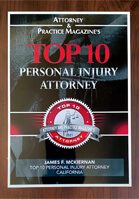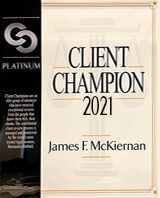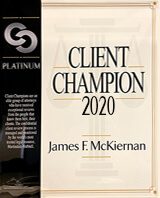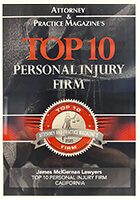How Is a Car Accident Settlement Calculated?

When you’re recovering from a car accident, the last thing you want to do is argue with an insurance adjuster. But it’s important to know that their initial offer is based on a formula designed to save their company money, not to make you whole again. A true settlement should account for every single way the crash has impacted your life. This includes the stack of medical bills on your counter, the paychecks you missed while out of work, and the physical pain and emotional stress you’re dealing with daily. Understanding how is a car accident settlement calculated from a legal perspective—not just the insurance company’s—is the key to securing fair compensation. We’ll walk you through the components of a claim so you can see what your case is really worth.
Key Takeaways
- Calculate Both Tangible and Intangible Losses: A fair settlement goes beyond covering receipts. It must account for your concrete financial costs (economic damages) like medical bills and lost wages, as well as the real but less tangible impact on your life, such as physical pain and emotional suffering (non-economic damages).
- Documentation is Non-Negotiable: To build a strong case, you must prove every loss. Systematically collect all medical bills and records, get official proof of your lost income, and maintain a personal journal detailing your daily pain and the accident’s effect on your quality of life.
- Treat the First Offer as a Starting Point: Never accept the insurance company’s initial offer without a thorough review. It’s almost always a lowball tactic designed to close your case quickly. A fair settlement must cover all your needs—past, present, and future—so be prepared to negotiate for the full value your evidence supports.
What Makes Up a Car Accident Settlement?
After a car accident, one of the first questions on your mind is probably, “How much is my claim worth?” There’s no simple calculator for this, because a fair settlement is designed to cover the full range of losses you’ve experienced—not just the obvious ones. It’s about more than just the dent in your car or the initial hospital visit; the goal is to provide the financial resources you need to get your life back on track.
To determine a fair settlement amount, we look at every way the accident has impacted you. This process involves calculating two main types of losses, known legally as “damages.” The first category covers all the concrete, measurable costs you’ve faced—the ones that come with a clear price tag. The second category accounts for the less tangible, but equally real, effects the accident has had on your well-being. Understanding both is the first step toward ensuring you receive the compensation you truly deserve.
Economic vs. Non-Economic Damages
When lawyers and insurance companies calculate a settlement, they divide your losses into two main buckets: economic and non-economic damages. Think of economic damages as anything you can prove with a receipt, bill, or invoice. These are the direct financial hits you took because of the accident, like your medical bills, lost paychecks from missing work, and the cost to repair your car. They are the most straightforward part of a settlement to add up.
Non-economic damages are different. They compensate you for the personal, human cost of the accident. This includes things like physical pain, emotional distress, and the loss of your ability to enjoy life as you did before. While you can’t get a bill for suffering, these losses are very real and are a critical part of any fair personal injury claim.
What Are Special Damages?
“Special damages” is simply the legal term for your economic losses. These are the specific, out-of-pocket expenses you wouldn’t have if the accident had never happened. The goal is to tally every single cost you’ve incurred. This includes everything from the ambulance ride and emergency room visit to ongoing physical therapy, prescription medications, and any future medical treatments your doctor anticipates you will need.
This category also covers lost income if you were unable to work, as well as any potential loss of future earning capacity if your injuries affect your ability to do your job long-term. Even smaller costs, like paying for transportation to your doctor’s appointments, fall under special damages.
What Are General Damages?
“General damages” is the legal term for your non-economic losses. This part of your settlement is meant to compensate you for the ways the accident has negatively affected your quality of life. It addresses the physical pain and suffering you’ve endured, both at the time of the crash and during your recovery. It also covers the mental and emotional toll, such as the anxiety, fear, or PTSD that can follow a traumatic event.
This category also includes compensation for “loss of enjoyment of life.” For example, if your injuries now prevent you from playing with your children, participating in a favorite sport, or enjoying a hobby, that is a significant loss. While no amount of money can undo this harm, general damages are the legal system’s way of acknowledging its impact.
Key Documents You’ll Need
To build a strong case and accurately calculate your damages, organization is key. You should start gathering any and all paperwork related to the accident as soon as you can. This documentation provides the concrete proof needed to justify your claim and shows the insurance company that you are serious about getting a fair settlement. Having these documents ready will streamline the entire process.
Here’s a checklist of what to collect:
- All medical records, hospital bills, and receipts for prescriptions.
- Estimates and invoices for your vehicle repairs or a valuation if it was totaled.
- Proof of lost income, such as pay stubs or a letter from your employer.
- Receipts for any other related expenses, like rental cars or rideshares.
Our team can help you identify and gather all the necessary evidence to support your case.
How to Calculate Economic Damages
Economic damages are the foundation of your car accident settlement. Think of them as the tangible, black-and-white costs that have a clear price tag. This isn’t about pain or emotional distress (we’ll get to that later); this is about every single dollar you’ve had to spend or have lost because of the accident. Calculating these damages accurately is crucial because it sets the baseline for what you’re owed. It requires careful organization and a thorough accounting of all your losses, from the obvious hospital bills to the less obvious cost of gas for trips to physical therapy. We’ll walk through the main categories to ensure you don’t leave any money on the table.
Tallying Medical Bills and Future Care
This is often the largest part of your economic damages. Start by gathering every single medical bill related to the accident. This includes the ambulance ride, emergency room visit, hospital stay, surgeries, doctor’s appointments, prescription medications, and physical therapy sessions. But it doesn’t stop there. A key part of your claim is accounting for future medical needs. If your injuries will require ongoing treatment, future surgeries, or long-term care, those projected costs must be professionally estimated and included. Keep meticulous records of every expense, as these documents are the primary evidence for your medical claim.
Calculating Lost Wages and Income
If the accident kept you from working, you are entitled to compensation for that lost income. This calculation includes more than just your hourly wage or salary. It also covers missed overtime, lost bonuses, and any used sick or vacation days you had to take. You’ll need to collect pay stubs, tax returns, and a letter from your employer detailing your rate of pay and the time you missed. Furthermore, if your injuries permanently affect your ability to do your job or earn the same income as before, you can claim lost earning capacity. This projects your financial losses over your expected career lifetime.
Assessing Property Damage
The most obvious property damage after a crash is usually to your vehicle. You should get a detailed estimate for repairs from a reputable auto body shop. If your car is declared a total loss, you are owed its fair market value right before the accident happened. Don’t forget about other personal items that were damaged or destroyed in the crash. This could include your cell phone, laptop, eyeglasses, or even a child’s car seat, which should always be replaced after an accident. Keep receipts for any property repairs or replacements, as these are all part of your claim.
Tracking Other Out-of-Pocket Costs
Many smaller, related expenses can add up quickly after an accident. It’s important to track all of these out-of-pocket costs. This category includes things like rental car fees while your vehicle is being repaired, the cost of rideshares or public transit to get to your medical appointments, and even parking fees at the hospital or clinic. If you had to hire someone for childcare, cleaning, or yard work because your injuries prevented you from doing it yourself, those costs are also recoverable. The key is to document every expense with receipts and notes. No cost is too small if it’s a direct result of the accident.
How to Value Non-Economic Damages
Unlike a stack of medical bills, you can’t put a simple price tag on pain, anxiety, or the loss of enjoyment in your life. These are known as non-economic damages, and they represent the very real, human cost of an accident. Because these damages are subjective, calculating them is more of an art than a science. There isn’t a magic calculator that spits out a number. Instead, attorneys and insurance companies rely on established methods to translate your personal suffering into a monetary value that can be included in your settlement.
The goal is to arrive at a figure that fairly reflects the physical pain and emotional turmoil you’ve endured. This includes everything from the daily discomfort of your injuries to the mental anguish of post-traumatic stress. Two of the most common methods used to determine this value are the “multiplier method” and the “per diem” method. Understanding how these work can give you a clearer picture of what to expect as your attorney builds a case to fight for the full compensation you deserve.
Using the Pain and Suffering Multiplier
One of the most common ways to calculate pain and suffering is the multiplier method. The process starts by adding up all your economic damages—things like medical bills, therapy costs, and lost wages. That total is then multiplied by a number, typically between 1.5 and 5. This number is the “multiplier.”
Where your case falls on that scale depends entirely on the specifics of your situation. A minor injury with a quick recovery might get a 1.5 multiplier, while a severe, permanently disabling injury could warrant a 5. As one legal expert notes, “More serious, long-lasting injuries or traumatic accidents usually lead to higher compensation.” An experienced personal injury attorney will argue for the highest multiplier your case justifies by highlighting the severity of your injuries and their long-term impact.
Applying the “Per Diem” Method
Another approach is the “per diem” method, which is Latin for “per day.” This strategy assigns a specific dollar amount for each day you suffer from your accident-related injuries. The clock starts on the day of the accident and stops when you reach what’s known as “maximum medical improvement”—the point where your doctor says you are as recovered as you’re going to be.
To determine a reasonable daily rate, an attorney might use your daily earnings as a benchmark. The argument is straightforward: if you earned a certain amount per day at your job, then a day spent in pain should be worth at least that much. This method is often most effective for injuries that have a clear and finite recovery period.
Assessing the Impact on Your Quality of Life
Beyond physical pain, a car accident can fundamentally change your ability to enjoy your life. Can you no longer play with your kids, go for a hike, or participate in hobbies you once loved? This loss of enjoyment is a significant part of your non-economic damages. To value this, you need to demonstrate exactly how your daily life has been negatively affected.
Insurance companies look closely at this aspect when calculating a settlement. They consider “how your daily life is affected, and how good your medical records are.” Keeping a personal journal that details your daily struggles, limitations, and missed activities can be powerful evidence. It helps paint a clear picture of your new reality, making a compelling case for why you deserve fair compensation for these intangible losses.
Putting a Value on Emotional Distress
The psychological aftermath of a car accident can be just as debilitating as the physical injuries. Conditions like anxiety, depression, insomnia, and post-traumatic stress disorder (PTSD) are common and compensable. Putting a value on this emotional distress involves showing the severity of your condition and how it has impacted your life.
There are no fixed amounts for emotional distress; the compensation depends on your specific circumstances. Seeking treatment from a therapist or psychologist is crucial. Their records provide official documentation of your diagnosis, treatment plan, and the professional opinion that your emotional trauma is a direct result of the accident. This evidence is essential for proving that your mental anguish is a real and significant component of your suffering.
What Factors Impact Your Settlement?
Calculating a car accident settlement isn’t about plugging numbers into a simple formula. Several key factors can significantly influence the final amount you receive. Think of these as the building blocks of your claim—each one plays a role in shaping the value of your case. Understanding these elements helps you see the full picture and set realistic expectations for what your settlement could look like. From the nature of your injuries to the details of state law, let’s walk through the major factors that will come into play.
The Severity of Your Injuries
The most significant factor in any personal injury claim is the severity of your injuries. A minor sprain that heals in a few weeks will result in a much different settlement than a traumatic brain injury that requires lifelong care. Insurance adjusters and juries look at the extent of your physical harm, the amount of medical treatment required, and whether your injuries have led to permanent disability or disfigurement. Generally, more serious and long-lasting injuries result in higher compensation because they involve greater medical expenses, more significant pain and suffering, and a larger impact on your life.
Your Projected Recovery Timeline
How long it takes for you to recover also plays a crucial role. A lengthy and difficult recovery process often means more medical appointments, extended time off work, and a greater disruption to your daily routine. Insurance companies consider your projected recovery timeline when calculating non-economic damages like pain and suffering. They will assess medical reports and expert opinions to understand the full scope of your healing journey. The degree to which your daily life is affected—from your ability to work to your capacity to enjoy hobbies—is a key part of this evaluation and directly influences the settlement value.
The Other Driver’s Insurance Limits
A practical but critical factor is the at-fault driver’s insurance policy limit. You can have a strong case with significant damages, but if the other driver only carries the minimum required insurance coverage, it can limit the amount you can recover directly from their insurer. While there are other potential avenues for compensation, such as your own underinsured motorist coverage or filing a lawsuit against the driver’s personal assets, the policy limit is often the most accessible source of funds. The final settlement amount often depends on a combination of how bad your injuries are and the available insurance coverage.
California’s Comparative Negligence Rule
California follows a “pure comparative negligence” rule, which means you can still recover damages even if you were partially at fault for the accident. However, your total settlement will be reduced by your percentage of fault. For example, if you are found to be 20% responsible for the crash and your total damages are $100,000, you would be eligible to receive $80,000. This rule makes it essential to clearly establish the other driver’s liability and minimize any blame placed on you. An insurance adjuster may try to assign you a higher percentage of fault to reduce their payout.
The Strength of Your Evidence
You can’t just state your losses; you have to prove them with clear and compelling evidence. The quality and organization of your documentation can make or break your settlement negotiations. To build a successful claim, you need strong evidence that validates every aspect of your damages. This includes all medical records and bills, proof of lost wages from your employer, photos of your injuries and property damage, and even a personal journal detailing your daily pain levels and the accident’s impact on your life. The more thoroughly you can document your experience, the stronger your position will be when it’s time to negotiate.
How Are Settlements Calculated?
Figuring out the value of a car accident claim isn’t about plugging numbers into a simple calculator. It’s a detailed process that looks at every single way the accident has affected your life, from medical bills to the emotional toll it has taken. Insurance companies have their formulas, but a fair settlement should account for the full scope of your losses. Understanding how these calculations work is the first step toward ensuring you receive the compensation you rightfully deserve. It involves adding up clear-cut costs and placing a value on the less tangible, but equally real, impacts on your well-being.
The Multiplier Method: A Closer Look
One of the most common ways to estimate the value of pain and suffering is the multiplier method. This approach starts by adding up all your economic damages—these are the tangible costs with a clear price tag, like medical bills, physical therapy costs, and lost wages from being unable to work. Once you have that total, it’s multiplied by a number, typically between 1.5 and 5. The multiplier isn’t random; it reflects the severity of your injuries and the overall impact on your life. A minor injury with a quick recovery might get a 1.5 or 2, while a severe, life-altering injury with long-term consequences could warrant a multiplier of 5. This method provides a framework for putting a dollar amount on your non-economic damages.
The Combined Damages Approach
A fair settlement offer does more than just cover your immediate bills. It should be a comprehensive figure that fully compensates you for all the harm you’ve experienced because of the accident. This means it needs to account for both your current and future needs. A good settlement offer will combine your economic damages (like medical expenses and property damage) with your non-economic damages, which include pain and suffering, emotional distress, and loss of enjoyment of life. The goal is to reach a number that truly reflects the total impact the accident has had on you, ensuring you have the resources needed to move forward. It’s about making you whole again, as much as financial compensation can.
How Insurance Policies Affect the Math
Insurance companies often rely on specific formulas to come up with their initial settlement offers. A common one looks something like this: (Economic Damages) x Multiplier + Lost Wages = Settlement Value. They start with your hard costs—medical bills, car repair estimates, and documented lost income—because these are the easiest to verify. Then, they apply their own multiplier for your pain and suffering, which is often on the lower end of the scale. It’s important to remember that the insurance adjuster’s goal is to resolve the claim for the lowest amount possible, so their initial calculation is just a starting point for negotiations, not the final word.
How to Assess the First Offer
When you receive that first settlement offer from the insurance company, take a deep breath. It’s almost always going to be lower than what your claim is actually worth. Insurance adjusters are trained to start low, hoping you’ll be tempted by a quick payout and accept before you understand the full extent of your damages. Don’t feel pressured to say yes right away. A proper settlement should cover all your past, present, and future needs related to the accident. It’s wise to review any offer with an experienced attorney before making a decision, as they can help you understand the true value of your claim and whether the offer is fair.
Common Mistakes to Avoid
The actions you take immediately after an accident can significantly affect your settlement. Some of the most common mistakes to avoid include not filing a police report, waiting too long to see a doctor, or admitting any degree of fault at the scene. Failing to document everything—from your injuries to the damage to your vehicle—can also weaken your claim. Another critical error is giving a recorded statement to the other driver’s insurance company without consulting a lawyer first. These missteps can give the insurance company reasons to downplay your injuries or deny your claim altogether, so it’s crucial to be careful from the very beginning.
How to Document Your Damages
Think of building your personal injury claim like telling a story—the more details and evidence you have, the more compelling it becomes. Strong documentation is the foundation of a fair settlement because it provides concrete proof of how the accident has affected your life, physically, financially, and emotionally. Insurance companies require clear evidence to justify the compensation you’re asking for. Keeping organized records from day one not only strengthens your case but also reduces stress later on. It allows your attorney to accurately calculate your damages and fight effectively for the full amount you deserve.
Gather All Medical Records and Bills
Your health is the top priority, and every step of your medical journey is a crucial piece of your claim. Start collecting all related paperwork immediately. This includes everything from the initial ambulance ride and emergency room visit to follow-up appointments with specialists, physical therapy sessions, and prescription receipts. Don’t forget to include costs for medical equipment like crutches or braces. These documents create a clear timeline of your injuries and establish a direct link between the accident and your medical needs. Keeping a dedicated folder for these bills and records will help you and your attorney calculate your settlement accurately.
Show Proof of Lost Income
An accident doesn’t just cause physical harm; it can also deal a serious blow to your finances. To claim lost wages, you need to show exactly how much income you’ve missed out on. The most direct way to do this is by gathering recent pay stubs to establish your regular earnings. It’s also wise to get a letter from your employer that confirms your rate of pay, your typical hours, and the specific dates you were unable to work because of your injuries. If you had to use sick days or vacation time to recover, document that, too. This evidence proves the immediate financial impact the accident had on your livelihood.
Keep a Personal Impact Journal
Some of the most significant damages aren’t reflected in a bill or a pay stub. This is where a personal journal becomes invaluable for documenting your pain and suffering. On a regular basis, write down how you’re feeling physically and emotionally. Are you having trouble sleeping? Are you experiencing anxiety when you get in a car? Are you unable to enjoy hobbies or activities you once loved? Describe how the injuries affect your daily routines, your relationships, and your overall quality of life. This personal account provides a powerful narrative of your experience and helps quantify the non-economic damages that are a critical part of your claim.
Use Photos and Videos as Evidence
A picture is truly worth a thousand words, especially in a car accident case. Visual evidence can be incredibly persuasive. If you are able, take photos and videos at the accident scene, capturing the position of the vehicles, skid marks, property damage, and any relevant traffic signs. It’s just as important to document your injuries. Take clear pictures of any cuts, bruises, and swelling right after the accident and continue taking photos as they heal. This creates a visual record of your physical recovery process, which can be much more impactful than medical descriptions alone. These images help tell the story of what you’ve been through.
Get an Expert Opinion
Sometimes, the deepest injuries aren’t visible. Car accidents are traumatic events that can lead to significant emotional and psychological distress, such as anxiety, depression, or post-traumatic stress disorder (PTSD). If you are struggling with these issues, seeking help from a mental health professional is essential for your well-being. A therapist or counselor can provide the support you need to heal. Their professional diagnosis and treatment notes also serve as critical expert documentation for your claim, validating the emotional toll the accident has taken and ensuring you are compensated for all your suffering.
Dealing with the Insurance Company
After an accident, interacting with the other driver’s insurance company is a critical step, but it can feel intimidating. Remember, their primary goal is to protect their bottom line, which often means paying out as little as possible. They handle claims like yours every day and have specific strategies to minimize their costs. Understanding their approach is the first step toward protecting your own interests. It’s important to be prepared, stay calm, and not let them rush you into a decision that isn’t right for you. Having a clear plan for these conversations will help you stand your ground and work toward a fair resolution.
Watch Out for Common Insurance Tactics
One of the most frequent tactics you’ll encounter is a quick, low settlement offer. The insurance adjuster might seem friendly and concerned, hoping to build rapport before presenting an offer that is far less than what you deserve. They may pressure you to accept it on the spot, suggesting it’s the best you’ll get or that taking it will resolve things faster. Don’t fall for it. These initial offers rarely account for the full scope of your injuries, future medical needs, or lost income. It’s a strategy designed to close your case quickly and cheaply. Always take time to review any offer with an experienced attorney.
Prepare Your Negotiation Strategy
A strong negotiation strategy begins long before you ever speak to an adjuster. It starts with meticulous documentation. From the moment the accident happens, gather evidence. Take photos of the scene, your vehicle, and your injuries. Keep a detailed file of every medical bill, doctor’s note, and receipt for out-of-pocket expenses. You should also track any time you’ve missed from work. This collection of evidence forms the foundation of your claim. When it comes time to negotiate, you or your lawyer can present these facts clearly. Be prepared to reject low offers and provide the documentation that justifies a higher, fairer amount.
What to Expect from the Settlement Timeline
There is no one-size-fits-all timeline for a car accident settlement. The duration can depend on several factors, including the severity of your injuries and the complexity of your case. A straightforward claim with minor injuries might resolve in a few months. However, if you have serious injuries requiring long-term care, it’s wise to wait until you have a clear understanding of your future medical needs before settling. This is known as reaching maximum medical improvement (MMI). Rushing the process could leave you with unpaid bills down the road. The insurance company’s willingness to negotiate fairly also plays a significant role in the timeline.
Know When to Accept an Offer vs. Keep Negotiating
A good settlement offer is one that fully compensates you for everything you’ve lost due to the accident. This includes not just your current medical bills and lost wages, but also the costs of future treatment, your physical pain, and your emotional suffering. Before you accept a settlement offer, ask yourself if it truly covers all of these areas. Does it account for the long-term impact on your life? If the answer is no, it’s not the right offer. An experienced lawyer can help you calculate your total damages and determine if an offer is fair or if you should continue negotiating for the compensation you rightfully deserve.
Know Your Legal Rights
After a car accident, it’s easy to feel powerless. You’re dealing with injuries, car repairs, and a sudden disruption to your life. But one of the most powerful things you can do is understand your legal rights. Knowing the rules that govern car accident claims in California puts you back in control. It helps you make informed decisions, protect yourself from lowball offers, and ensure you’re on the right path to getting the compensation you deserve. Think of it as your personal roadmap for the journey ahead.
California’s Car Accident Laws
California operates under a “fault” system, which means the person responsible for causing the accident is also responsible for paying for the damages. This is why the law requires all drivers to carry liability insurance. If another driver’s negligence caused your injuries, you have the right to seek compensation from their insurance company. This compensation is meant to cover your medical bills, lost income, and other costs related to the crash. Understanding this basic principle is the first step in holding the right party accountable and starting your financial recovery.
Don’t Miss the Statute of Limitations
Time is a critical factor in any personal injury case. In California, there’s a legal deadline for filing a lawsuit, known as the statute of limitations. For most car accident claims, you have two years from the date of the accident to file a lawsuit. If you miss this deadline, you will likely lose your right to pursue compensation forever. While two years might sound like a long time, building a strong case involves gathering evidence, negotiating with insurers, and preparing legal documents, all of which take time. It’s essential to act promptly to protect your rights.
Review Your Settlement Agreement Terms
When an insurance company makes a settlement offer, it can be tempting to accept it right away, especially when bills are piling up. However, it’s crucial to review the terms carefully before you sign anything. Accepting a settlement is final. Once you do, you almost always waive your right to seek any further compensation for the accident, even if your injuries turn out to be more severe than you initially thought. Make sure you fully understand what the agreement covers and what future claims you are giving up.
Why You Need an Experienced Lawyer
Trying to handle a car accident claim on your own can be overwhelming. Insurance adjusters are trained negotiators whose goal is to pay out as little as possible. An experienced personal injury lawyer levels the playing field. They can help you understand the full value of your claim, gather the necessary evidence, and negotiate with insurance companies on your behalf. Having a professional advocate in your corner not only takes the stress off your shoulders but also ensures your rights are protected every step of the way.
Related Articles
- How Can California Negligence Law Affect Recovering Damages?
- Who Is at Fault in a Rear-End Collision in California?
- Why You Need a Lawyer for a Car Accident Not Your Fault
- FAQ Lawyers – James McKiernan Lawyers
Frequently Asked Questions
How long does it usually take to get a car accident settlement? There’s no standard timeline, as it really depends on the specifics of your case. A straightforward claim with minor injuries might settle in a few months. However, if you have more serious injuries, it’s often best to wait until you’ve reached what doctors call “maximum medical improvement.” This ensures you have a complete picture of your future medical costs before you agree to a final number. Rushing to a quick settlement can leave you paying for long-term care out of your own pocket.
Why shouldn’t I just accept the insurance company’s first offer? That first offer is almost always a strategic starting point, not a fair assessment of your claim. Insurance adjusters are trained to settle cases for the lowest amount possible, and they know that many people are tempted by the idea of quick cash. These initial offers rarely account for the full scope of your future medical needs, lost earning potential, or the true extent of your pain and suffering. It’s best to see it as the beginning of a negotiation, not the end.
Can I still get a settlement if the accident was partly my fault? Yes, you can. California follows a “pure comparative negligence” rule, which means you can still recover damages even if you share some of the blame. Your final settlement amount will simply be reduced by your percentage of fault. For example, if you were found to be 10% responsible for the crash, your total compensation would be reduced by 10%. Don’t assume you have no case just because you may have made a mistake.
Do I really need to hire a lawyer if the other driver’s fault seems obvious? Even in a seemingly clear-cut case, an insurance company’s goal is to minimize its payout. An adjuster may try to argue that your injuries aren’t as severe as you claim or that you share more fault than you actually do. An experienced attorney handles all communication with the insurer, builds a case with strong evidence to prove the full value of your damages, and negotiates on your behalf to ensure you aren’t taken advantage of.
What’s the single most important thing I can do to protect my claim right now? The most critical step you can take is to document everything. Keep a dedicated folder for every medical bill, receipt, and pay stub related to the accident. Start a simple journal to track your daily pain levels, emotional state, and any activities you can no longer do because of your injuries. This collection of evidence provides the concrete proof needed to justify your claim and is the strongest tool you have for securing a fair settlement.


























